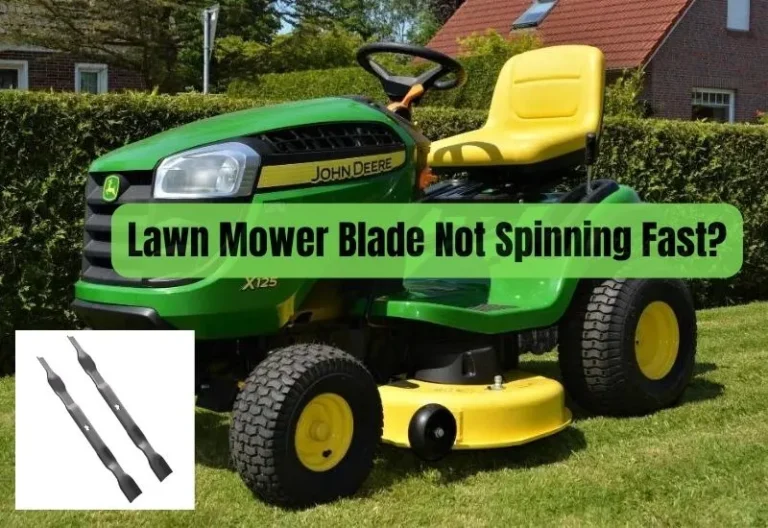John Deere Electric PTO Troubleshooting Guide
John Deere mowers are renowned for their reliability and durability. But like any piece of machinery, they may occasionally experience problems that need to be addressed.
One of the most critical components of a John Deere tractor is the Electric Power Take-Off (PTO), which goes wrong. The problem manifests as your blades, not spending, and reduced performance.
For a deeper dive into the problem, the reason for the problem, how to recognize and diagnose the PTO being the culprit and the solution, read till the end of this article.
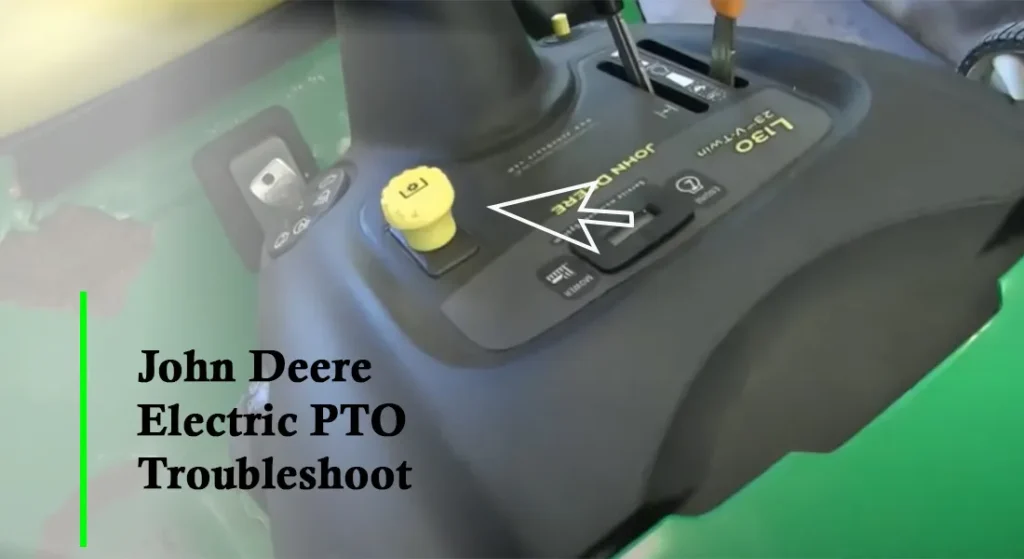
How to Know It’s a Bad PTO on Your John Deere?
The electric PTO on your John Deere is concerned with engaging your mower deck. It uses electricity to do so (hence an ‘electric’ PTO). The process is something like this:
PTO Switch > electric signal to PTO clutch > Mower blades
When there is a problem with the electric PTO, in your John Deere, naturally the process will be hampered. And the components of this system will not function properly.
Here’s what you will notice:
Loud Noises
Loud noises coming from the PTO clutch while it’s engaged is a sign of PTO damage.
Clutch Slipping
The PTO clutch may slip and fail to engage fully. This can cause the mower blades to rotate slower than they should.
Uneven Cuts
As the PTO clutch slips, naturally the mower blades don’t perform optimally. As a result, you get uneven cuts or missed spots.
Mower Blades Won’t Engage
Mower blades not engaging is the most common complaint with electric PTO failure on John Deere. If you can’t get the mower blades to engage at all, it could be a sign of a damaged PTO clutch.
PTO Engages Intermittently
The PTO clutch switches abruptly between engaging and disengaging randomly.
Burning Smell
A burning smell coming from the PTO clutch comes from component damage due to overheating. This is a sure indicator that a PTO component is fried.
Note: If you suspect that your PTO clutch is damaged, it’s important to stop using your lawn tractor immediately and have it inspected by a qualified technician.
Related Post: The Guide on PTO Switch Wiring Diagram
Reasons for a John Deere Electric PTO Failing
There are several reasons why a John Deere Electric PTO (Power Take-Off) clutch may fail. This includes:
1. PTO Switch
The PTO switch is a common source of the problem. In JD models like the Sabre, there are only three types of switches. The switch may not be fully engaging or fully clicking.
Diagnosis
Inspect the PTO switch by visually examining it. Take out the switch and look for wear and tear. Use a multimeter to check for continuity.
Touch the multimeter to the switch wire. Also check on other spots around the switch. You will most likely find no continuity.

The PTO Clutch consists of several components that can go bad:
Coil
The coil inside the PTO clutch is responsible for creating a magnetic field that engages the clutch. If the coil becomes damaged, the clutch will no longer engage. So the mower blades will not spin.
Armature
The armature is the rotating part of the PTO clutch that engages the mower blades. If the armature becomes damaged or worn, it can cause the clutch to slip or not engage properly.
Bearings
The bearings inside the PTO clutch help the armature rotate smoothly. If the bearings become worn or damaged, they can cause the clutch to make noise, vibrate excessively, or fail to engage properly.
Wiring
The wiring that connects the PTO clutch to the mower’s electrical system can also cause problems. It is often housed in protective wiring. If the wiring becomes damaged or corroded, it can prevent the clutch from receiving the proper voltage and cause it to fail.
Diagnosis
A visual inspection followed by a multimeter check can determine clutch damage.
3. Wear and Tear
Like any mechanical component, the PTO clutch can wear out over time due to normal use. As the clutch wears, it may begin to slip or fail to engage properly, leading to failure.
Diagnosis
Start by visually inspecting the PTO clutch for any signs of damage. Look for cracks, breaks, or any other visible signs of wear and tear.
4. Overheating
Overheating can cause the PTO clutch to fail prematurely. This can be caused by a lack of lubrication, an obstruction in the airflow around the clutch, or a problem with the cooling fan.
Diagnosis
Visual inspection of a molten clutch, wire and switch is the main way to diagnose the problem.
Related Post: 7 Reasons Why Your John Deere Zero Turn One Side Not Working
5. Electrical Issues
The PTO clutch relies on an electrical connection to engage and disengage properly. A problem with the wiring or electrical components causes the clutch to fail.
Diagnosis
Use a multimeter to check the resistance across the PTO clutch. Refer to your owner’s manual for the specific resistance values (that should show only when the clutch is in good working condition).
For example, for rear PTO solenoid the resistance should be between 10.5-11.5 ohms. If the resistance values are outside of the recommended range, it could be a sign of damage to the clutch.
6. Misuse
Using the PTO clutch improperly, such as engaging it at too high of an RPM or using it for heavy-duty tasks it was not designed for, can cause premature failure.
Lack of maintenance, such as failing to keep the clutch lubricated or failing to clean debris from around the clutch, can cause it to fail prematurely.
Diagnosis
Your PTO frequently failing can be a sign that you are not maintaining it properly. Check for lubrication and debris in the PTO.
With the engine running and the blades disengaged, engage the PTO clutch and listen for any unusual noises or vibrations. Observe the mower blades while the PTO clutch is engaged.
Related Post: How to Fix John Deere Mower Deck Stuck In Up Position
John Deere Electrical PTO Troubleshooting
Here are some possible fixes for a John Deere Electric PTO:
Replace the Switch:

The switch needs to be replaced when damaged.
- Disconnect the wiring harness from the back of the switch.
- You may need to use a pair of pliers to gently pull the wiring harness out of the switch.
- Then remove the mounting nut that holds the switch in place using a wrench or pliers.
- Once the mounting nut is removed, carefully remove the old switch from the mounting bracket.
- Install the new switch in the same position as the old switch and tighten the mounting nut with a wrench or pliers.
- Finally, reconnect the wiring harness to the back of the switch.
Replace the Clutch:
The clutch should be replaced if more than one component is destroyed. However, if it’s just the coil or a wire or a bearing, replace only that. Here’s how to replace the clutch:
- Remove the belt from the PTO clutch by releasing the tension on the belt tensioner pulley and slipping the belt off the PTO clutch.
- Unplug the electrical connector from the PTO clutch. Depending on your specific model of John Deere mower, this may require you to remove a protective cover or other components to access the connector.
- Remove the retaining bolt or bolts that secure the PTO clutch to the engine crankshaft. You may need to use a socket wrench or impact wrench to remove the bolt(s).
- Once the PTO clutch is free, carefully lift it off the engine crankshaft and remove it from the mower.
- Install the new PTO clutch by reversing the steps above.
Frequently Asked Questions (FAQs)
How does a John Deere Electric PTO work?
The Electric PTO on a John Deere tractor is engaged when the operator flips a switch, which activates an electromagnetic clutch. The clutch then engages the PTO shaft, which rotates to transfer power to the attached implement.
What are some common problems with a John Deere Electric PTO?
Some common problems with a John Deere Electric PTO include faulty wiring or connections, blown fuses, worn or damaged clutch components, malfunctioning switches, and seized bearings.
How does electric PTO clutch work?
An Electric PTO clutch is an electromagnetic device that engages and disengages the power take-off shaft on a tractor or other machinery.
What happens when a PTO switch is disengaged?
When the operator flips the switch to disengage the PTO, the electrical current to the clutch coil is cut off. The magnetic field dissipates, and the armature plate springs back to its original position, breaking contact with the stator plate and stopping the rotation of the PTO shaft.
Related Posts:
- Troubleshooting Guide: Moving a Non-Starting John Deere Zero Turn Mower
- Comparing John Deere 54 vs. 60 Inch Deck: Features and Variations
- Common Hydrostatic Transmission Problems with John Deere Mowers and How to Fix Them
- Understanding Engine Stalling When PTO Is Engaged: Causes and Troubleshooting Tips
- Why Isn’t My Lawn Mower PTO Engaging? Discover the Causes and Solutions

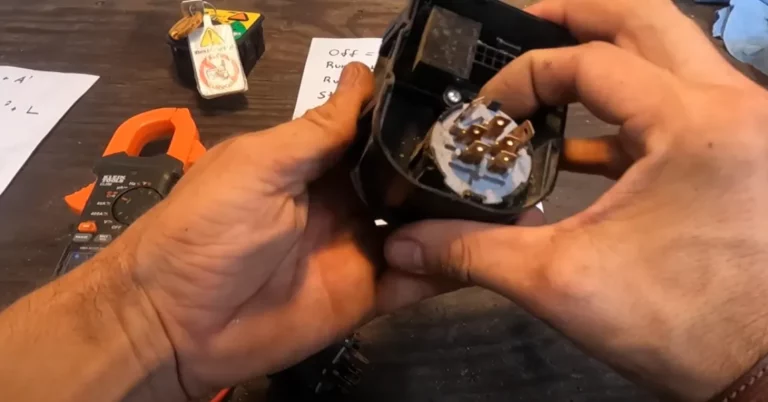
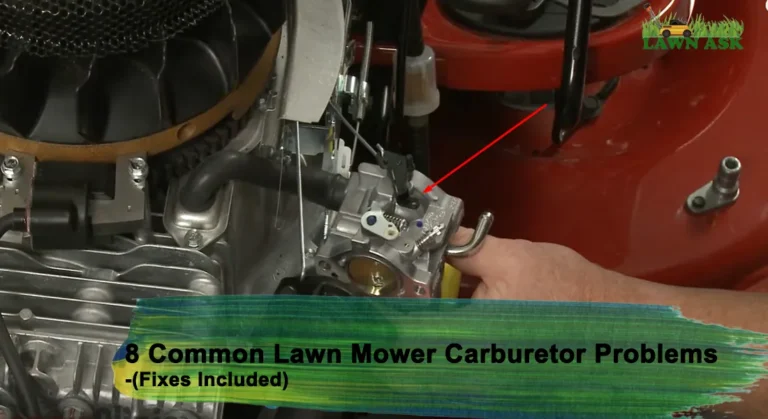
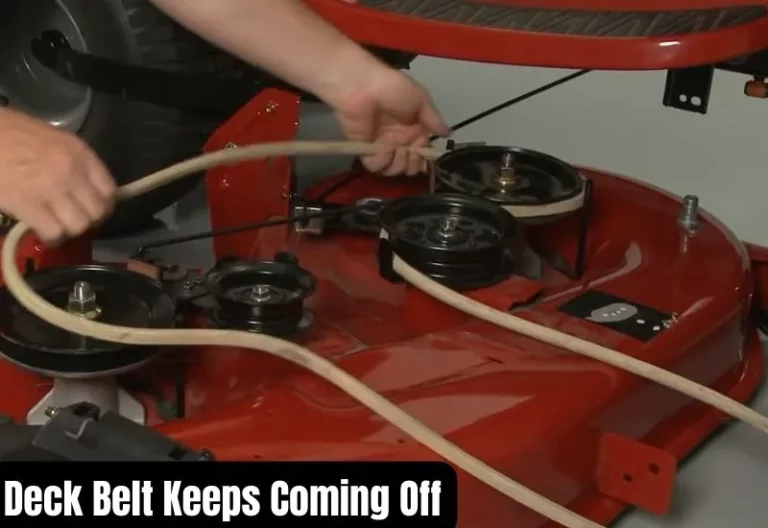

![Lawn Mower Smoking and Sputtering- How to Fix [DIY Solution]](https://lawnask.com/wp-content/uploads/2022/07/White-Smoke-From-The-Lawnmower.webp)
